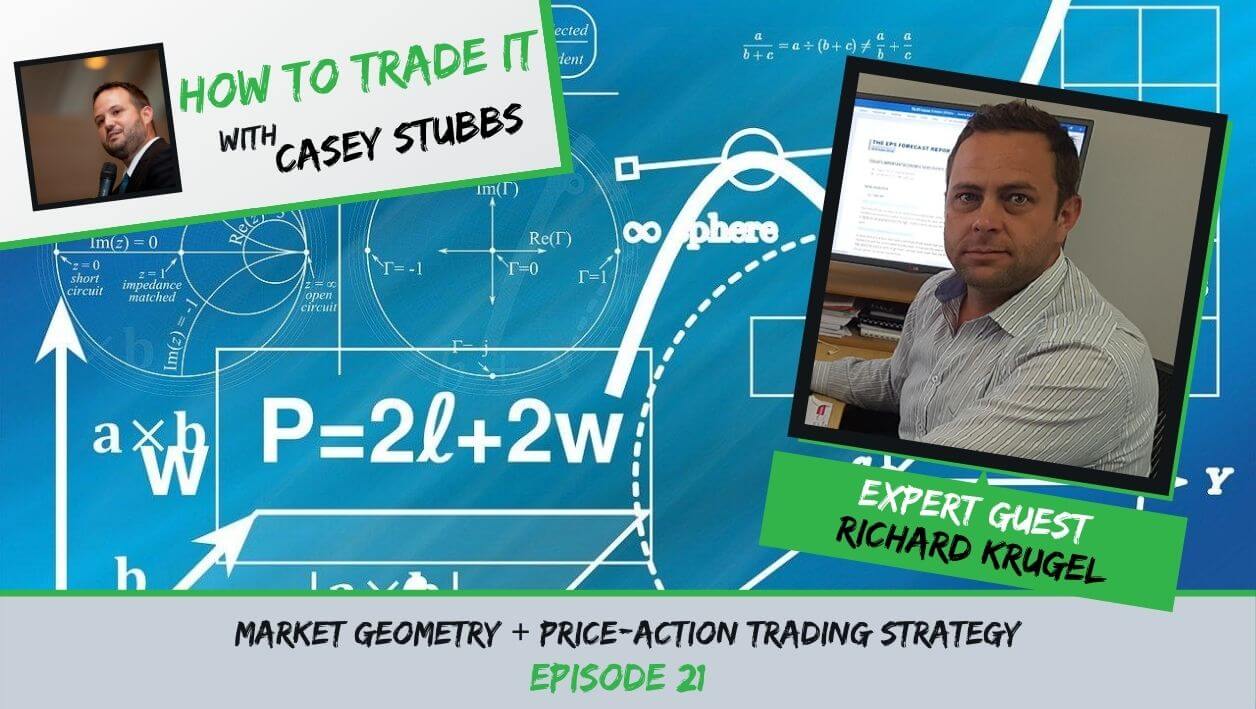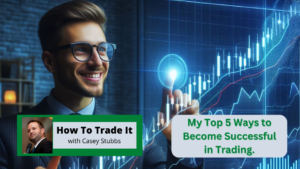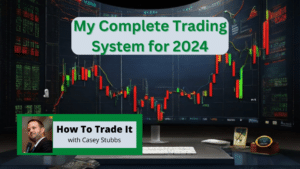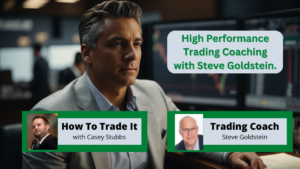Richard Krugel’s Market Geometry + Price-Action Trading Strategy, Ep #21

There is a science to how price moves, which Richard Krugel refers to as market geometry. When you understand market geometry, you can learn how to trade price action within the natural flows of the market. In this episode of How To Trade It, Richard joins me to talk about his background in trading, how to understand market geometry, and what trading full-time looks like for him.
Richard is a full-time Forex, Futures, and Options trader and developer of the Exponential Profits System. Understanding market geometry led to a breakthrough for Richard—and was ultimately what he developed his trading system around. Don’t miss this informational episode!
In this episode of How To Trade It, we talk Market Geometry with Richard Krugel. Check it out! #stocks #stock #StockMarket #trading #Investing #DayTrading #StockPicks Click To Tweet
Subscribe to How To Trade It
[maxbutton id=”3″][maxbutton id=”4″][maxbutton id=”5″][maxbutton id=”6″]
You’ll want to hear this episode if you are interested in…
- [2:23] How Richard Krugel started trading.
- [8:30] The biggest factor to turn things around.
- [9:46] The most important part of market geometry.
- [11:06] How much time is trading full-time?
- [15:21] The timeframe Richard follows for trades.
- [16:44] Why Richard chose a stress-free strategy.
- [17:59] Richard’s longest drawdown experience.
- [21:14] What sets Richard apart from other trading educators
- [23:23] Who is a good fit for Price-Action Income?
- [25:28] FREE e-book on Market Geometry
Richard’s background in price-action trading
Richard has been trading for about 14 years now and has been full-time since 2012. After dabbling in trading—and falling for a lot of get-rich-quick schemes in the beginning—he decided to get into trading full-time. He jumped at an opportunity and started trading equities—anywhere from 50-200 trades a day. It was a strict and fast-paced environment where he had to pay commissions on his winnings and desk fees.
After about a year, he had had enough. He decided to go out on his own and work from home and began trading futures. He needed to make money to support his family and couldn’t continue having months where he was up $2,000—followed by months where he was down $3,000. He had to sit down and make a conscious decision to make it work and be consistent. He was either going to do it properly or leave it entirely. His wife and family supported him throughout the entire process.
The importance of pursuing a mentor
Around the same time, Richard made the choice to pursue a mentor. He met someone who traded options and took a course with him—and began to make decent gains. His mentor taught him a lot about trading psychology and strategy. Richard still had setbacks, mostly emotional choices such as revenge trades and trying to always be right. But in the end, he gained experience and learned from the mistakes. He sought out another mentor, with whom he learned about technical analysis and market geometry—which is now his main price-action analysis technique. He wanted more freedom to spend time with his family, so he fine-tuned his strategy and has been using it ever since.
Market Geometry allows you to easily manage your trades
Richard points out that beginning traders often have the faulty assumption that they’ll somehow win 80-90% of their trades. Richard is profitable about 55% of the time. He emphasizes that the risk versus reward ratio is very important. You need a much larger reward potential, so you have to strategize and plan your trades properly. He plans when he enters the trade, what his stop-loss will be, and the target he’s shooting for. This allows him to manage the trade without a second thought.
Richard points out that it can take days for a setup to happen. But if he does his planning properly, he knows when to pull the trigger. Once everything falls into place, his trade lasts anywhere from a day to a month. Richard suggests making a habit out of planning a few hours a day and then track and manage your trade. With his strategy, he doesn’t spend more than 1-2 hours a day on the screen and he typically has no more than 3 trades happening at once.
Richard shoots to take no more than a 2% risk per trade and likes to lock in some profit before taking on multiple trades. He won’t risk more than 5% with 3+ trades going at once. Richard starts with a weekly chart and goes as far back as the data allows him to (even as far back as 2009). He wants to be aware of exactly where the lines are. He likes to draw down to a daily time frame, 4-hour, or 30-minute. He’ll even run a 5-minute on a short-term trade. It depends on the outlook of what he’s trying to trade—a huge swing trade or holding for a day or two.
Richard’s longest drawdown experience
Richard deals with very little stress, but some frustration. In the last two months, many of his trades have been trading sideways because the market is so volatile. But he trusts his strategy and knows it will work in most market conditions. Markets go through phases and sometimes you just need to ride it out.
Because he recognizes this fact, he never changes his strategy. The longest drawdown he experienced was at the beginning of 2019, and it lasted a month and a half. The volatility was all over the place—but he was able to climb out of it. Because his system takes very few trades a month, his longest drawdown was really only 6 trades.
You java realize that drawdowns are part of the business. He points out that you must “Ride the drawdowns—believing in yourself, believing in your system—to overcome those drawdowns and stick with yourself. That’s really going to bring you up.” You take some punches, but it’s how you roll with them that keeps you going. You just keep taking small strides and trust that things will get better.
What sets Richard apart from other trading educators? Who is a good fit for his system? Where can you get some FREE resources? Listen to the whole episode to find out!
Resources & People Mentioned
Connect with Richard Krugel
- Price Action & Income
- Watch on YouTube
- Follow on Facebook
- Connect on LinkedIn
Connect With Casey Stubbs
- Website: https://caseystubbs.com
- Subscribe! https://www.youtube.com/caseystubbs
- Twitter: https://www.twitter.com/caseystubbs
- Facebook: https://www.facebook.com/caseystubbs
- LinkedIn: https://www.linkedin.com/in/caseystubbs/
- Newsletter: https://tradingstrategyguides.ewebinar.com/webinar/live-workshop-learn-the-simple-baseline-strategy-13152
Subscribe to How To Trade It






